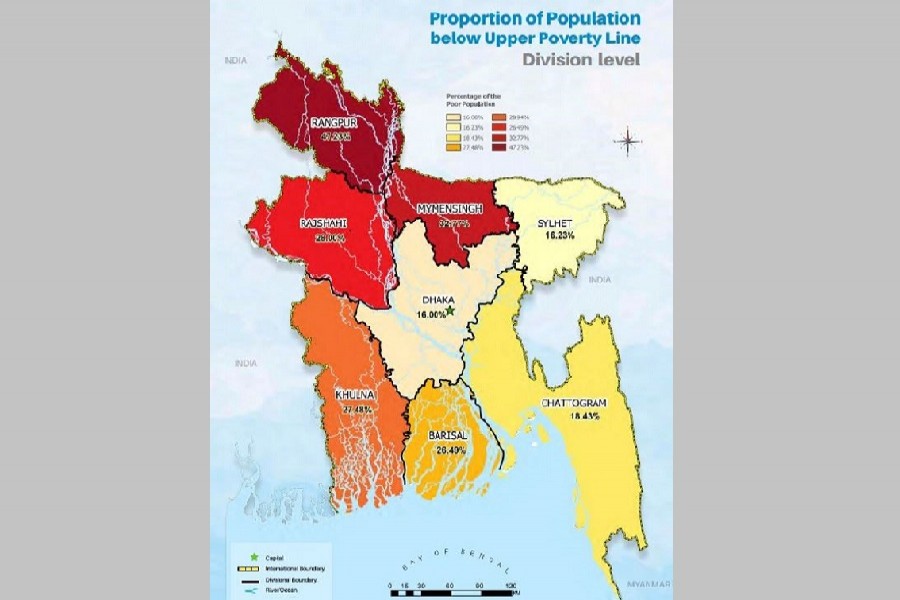Bangladesh has seen astonishing economic growth. Even at the time of the Covid-19 pandemic, the country has managed to keep its economy reasonably stable.
However, the fruits of this economic success may not have been distributed all over the country. In fact, eastern, western and northern parts of Bangladesh still showcase varying levels of development and poverty situation. Why has its economic success not been emulated in all parts of the country?
Poverty in different parts of Bangladesh
According to the poverty maps 2016 by the Bangladesh Bureau of Statistics and the World Food Programme, Rangpur has the highest proportion of the population under the poverty line at 47.23 per cent, followed by Mymensingh, Rajshahi and Khulna.
Dhaka, Sylhet, Chattogram and Barishal are in a relatively better state. Again, Dhaka has the least proportion of population below the upper poverty line at 16 per cent that lies below the poverty line in the whole country.
Disparity among regions
A glance at the position of these divisions on the map of Bangladesh will demonstrate a clear disparity in the direction of development and poverty alleviation. The northwestern region sees a higher proportion of the population under the upper poverty line while the eastern part of the country faring far better in poverty alleviation and ensuring economic development. What is the reason behind this difference between these two parts of the country?
Primarily, the economy of Bangladesh is dependent on service, agriculture and industry sectors. Since our independence, the majority of the households have been dependent on agriculture, particularly in the rural areas.
However, with the turn of the 21st century, the need for modernisation of agriculture and its impact to bring households above the poverty line has been brought forward a question – can this draw a link to the underperformance of Bangladesh’s western and northern parts?
The World Bank’s poverty assessment report 2010 showed that 47 per cent of rural households were primarily engaged in agriculture. Such households reported just a 27 per cent reduction in rural poverty from 2010 to 2016. But the important aspect is, from 2005 to 2010, agriculture contributed to 69 per cent decrease in rural poverty. Hence, this clearly showcases the waning influence of agriculture in poverty reduction.
From 2010 to 2016, the proportion of the population dependent on agriculture fell by 22 per cent in the eastern part of the country, while the same rate fell by 12 per cent in the western part.
Therefore, to a certain extent, the influence of industry is more than agriculture in terms of poverty reduction. And in recent years, the eastern part of Bangladesh has indeed seen a better development of industrial infrastructure when compared with the western part.
So, less concentration on and engagement in the industry may be one of the reasons behind Bangladesh’s apparent regional variation in poverty.
How to reduce this disparity?
The best way to bridge this gap between different regions is by ensuring equitable distribution of industries. Moreover, the connectivity between regions needs to be taken into consideration. The Padma Bridge, which is slated to be completed in 2022, will hopefully generate investments and create new business opportunities for industrial and agricultural sectors respectively. This will create thousands of jobs, thus saving many households from poverty.
The writer is a student at the University of Dhaka.
[email protected]


